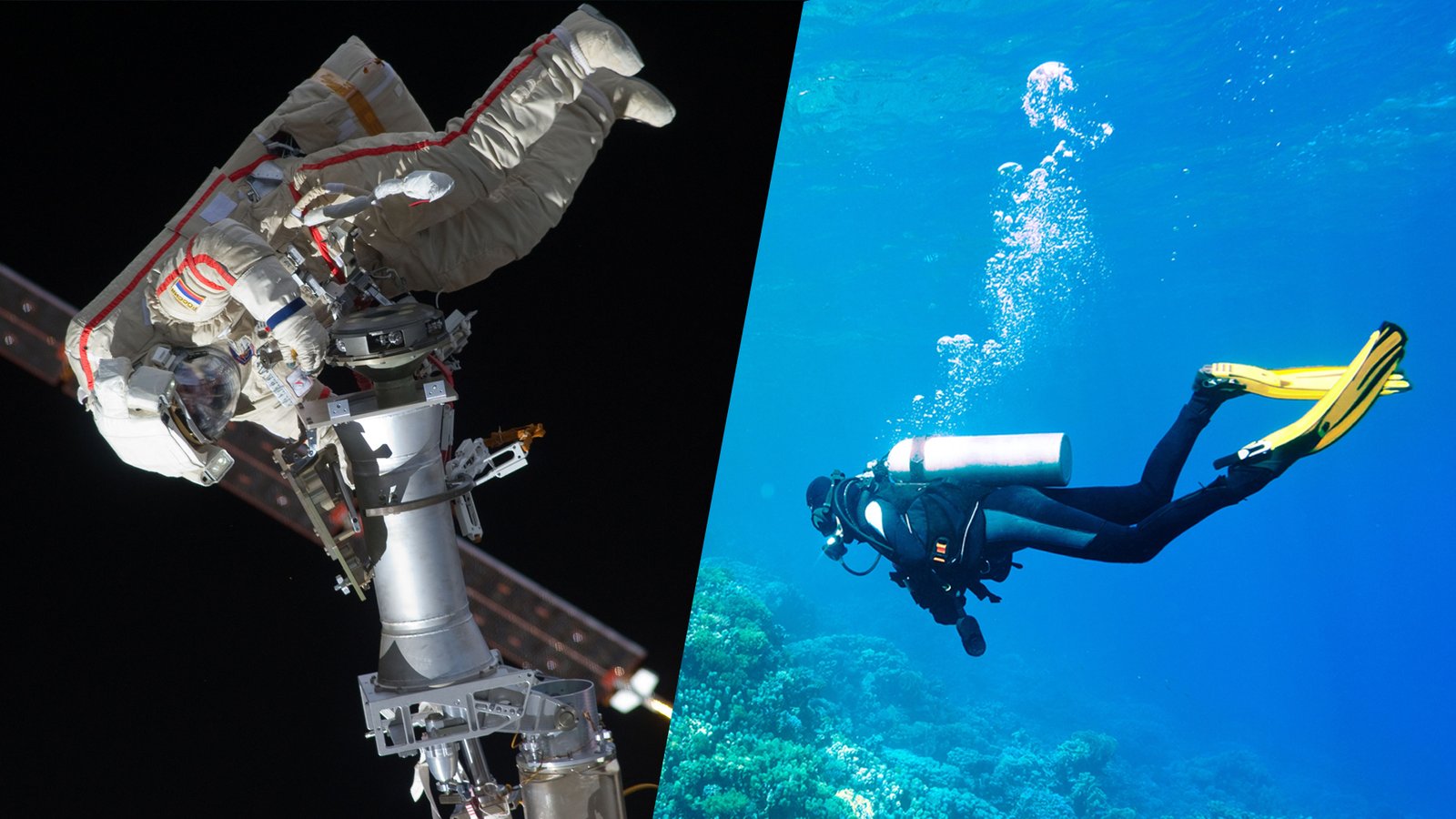The vast expanse of space and the deep open ocean may appear to be vastly different environments, but they share more similarities than one might think. Those who have ventured to the far reaches of both realms can attest to the remarkable parallels in the types of training and experiences required. Aeronautical engineer, astronaut, and aquanaut Nicole Stott is one such individual. Having spent 104 days in space aboard the Space Station and Space Shuttle, as well as extensive time underwater, Stott can attest to the interconnectedness of these seemingly disparate environments.
As a PADI-certified diver, Stott confirms the striking similarities between the underwater world and outer space. Both environments are extreme, challenging to access, dangerous, and require specialized equipment for navigation, making them inhospitable to humans. This makes the ocean an excellent analog and training ground for simulating the conditions of space.
Before astronauts embark on space missions, they undergo extensive training underwater. The Neutral Buoyancy Laboratory in Houston serves as a dedicated facility for this purpose, featuring one of the world’s largest indoor pools equipped with replicas of International Space Station components and other space structures.

In this underwater environment, astronauts don specialized gear and immerse themselves in the pool to simulate the weightlessness of space. With the assistance of support divers, they experience what it’s like to move and operate in a zero-gravity environment, providing a realistic training experience that closely resembles space travel.
The sensation of floating is common to both underwater and space environments, with the absence of gravity in space and buoyancy in water. Neither location allows for a casual approach, as both demand specialized equipment and careful navigation.
Stott and other astronauts have also trained at the Aquarius Lab, an underwater habitat located 60 feet beneath the surface off the Florida Keys. Spending 18 days submerged in this environment, Stott emphasizes the parallels between the isolation and self-reliance required in both underwater and space missions.
At significant depths, the body becomes saturated with nitrogen, posing risks if a rapid ascent is attempted. This parallels the challenges of space missions, where careful planning and teamwork are essential for survival in extreme conditions.
The experiences in these environments serve as valuable training for astronauts, preparing them for the challenges of space travel. Communication, teamwork, equipment usage, and emergency response are critical aspects that are tested both underwater and in space.

Stott emphasizes the psychological and physical challenges of training for space missions, highlighting the importance of self-survival, teamwork, and stress management in high-stakes environments. The rigorous training, whether in extreme underwater conditions or in the vacuum of space, prepares astronauts for the demands of space travel.
While diver certification is not a prerequisite for aspiring astronauts, Stott notes that those selected for space missions will undergo dive training and certification as part of their preparation. For individuals interested in experiencing the sensations of space exploration on Earth, Stott offers unique opportunities through programs like the Island Astronaut Camp.
Through initiatives like Space for A Better World and Space for Art Foundation, Stott aims to bridge the gap between space enthusiasts and professionals, fostering a deeper understanding of space exploration. By immersing oneself in the challenges of underwater living and working, individuals can better prepare for the realities of outer space.
Stott concludes by emphasizing the interconnectedness of inner and outer space, highlighting the unique parallels between living and working in extreme environments. Whether exploring the depths of the ocean or venturing into space, the lessons learned in one environment can significantly impact one’s readiness for the other.
